How to Make Mozzerella Soft Again




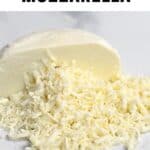
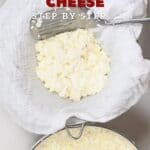

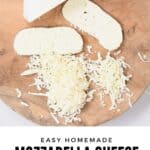

How to brand mozzarella cheese at home with just 4 ingredients (plus water) and a bit of patience. This homemade mozzarella cheese is stretchy, smooth, so much meliorate than store-bought. Plus, read the notes for some troubleshooting top tips!
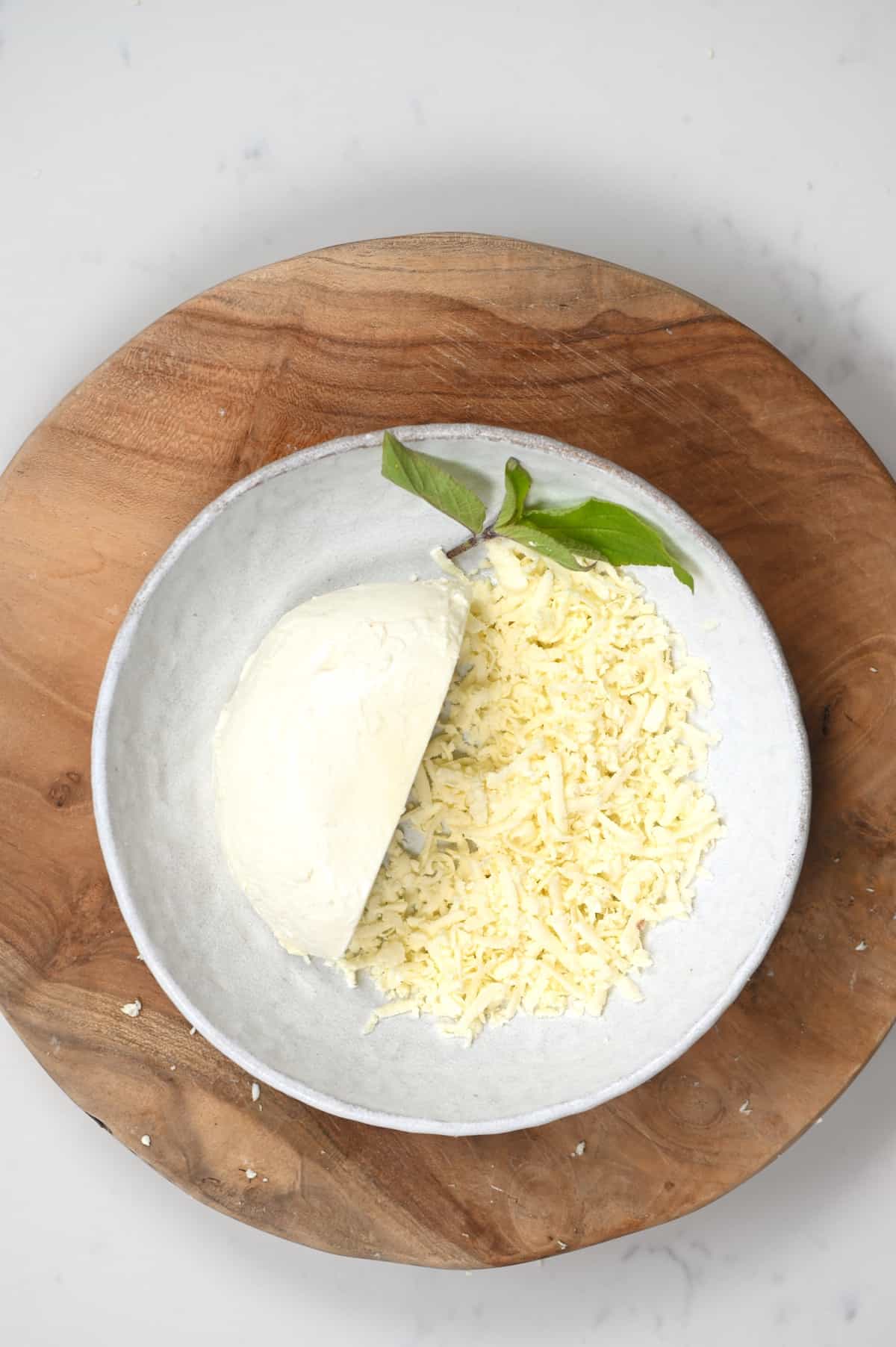
I've done things a bit topsy-turvy with this post, in that I already posted my vegan mozzarella post months ago (usually, information technology's the other fashion around). Now, finally, here is a dairy homemade mozzarella cheese DIY!
While not the easiest of cheese recipes to make at home (though also not terribly difficult), fresh mozzarella cheese – when done correctly- is perfection, so, of course, I spent a long time working on getting this process 'just right' earlier sharing it with you all. With a little practise (and a lot of experimentation), this is the method I use that provides the all-time results every unmarried time.
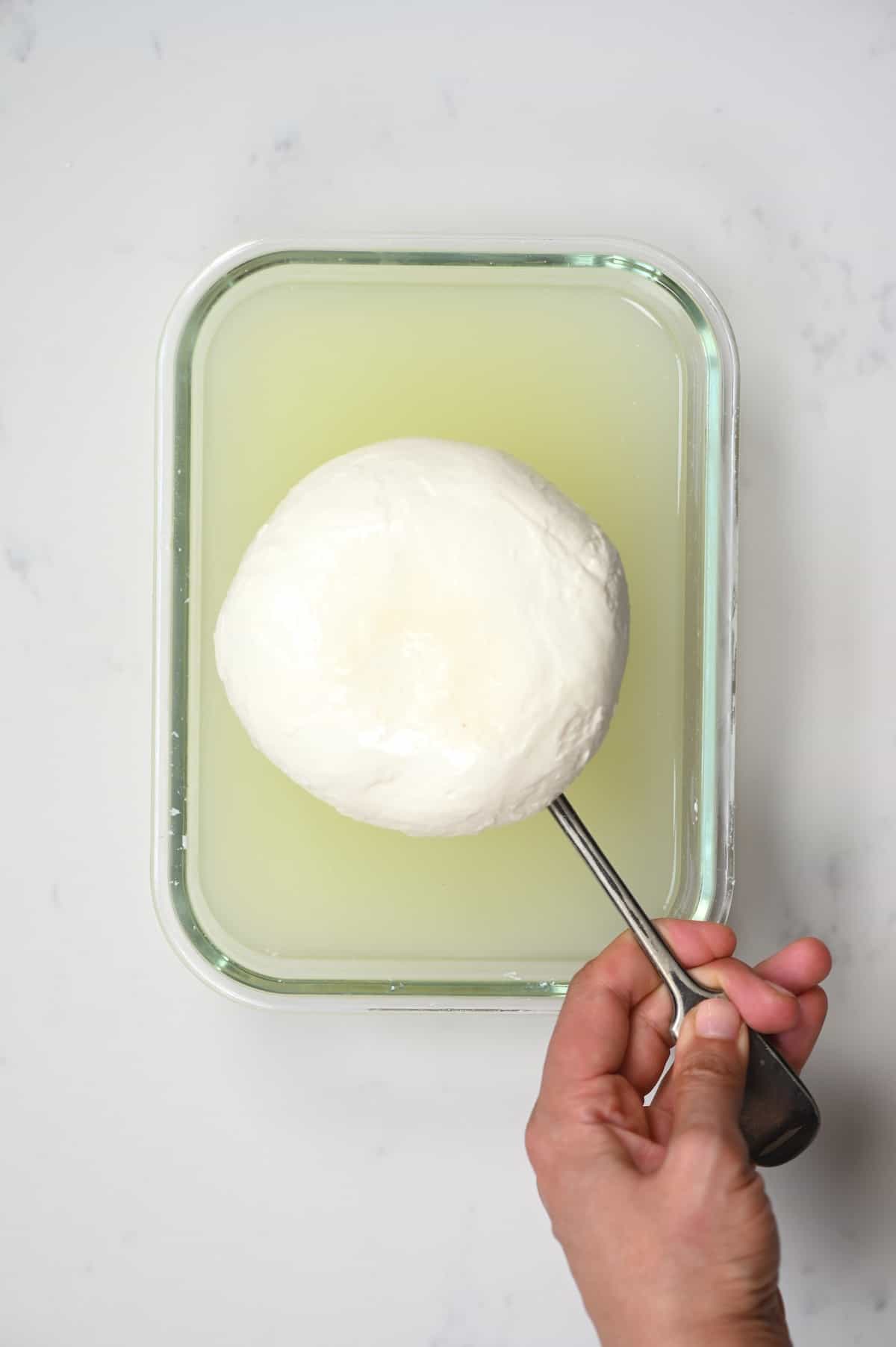
I think it's of import to start this mail service with a slight 'warning.' I've been making homemade dairy products for a couple of years at present (at least), and, as much as I love information technology, when you first venture into cheesemaking, at that place can be a bit of a learning curve.
It's non so much that the procedure is complicated at all (in fact I dearest the simplicity of cheesemaking), withal, it can be a bit 'finicky' when information technology comes to using merely the right amount of curdling agent for what milk yous've called, and practice makes perfect.
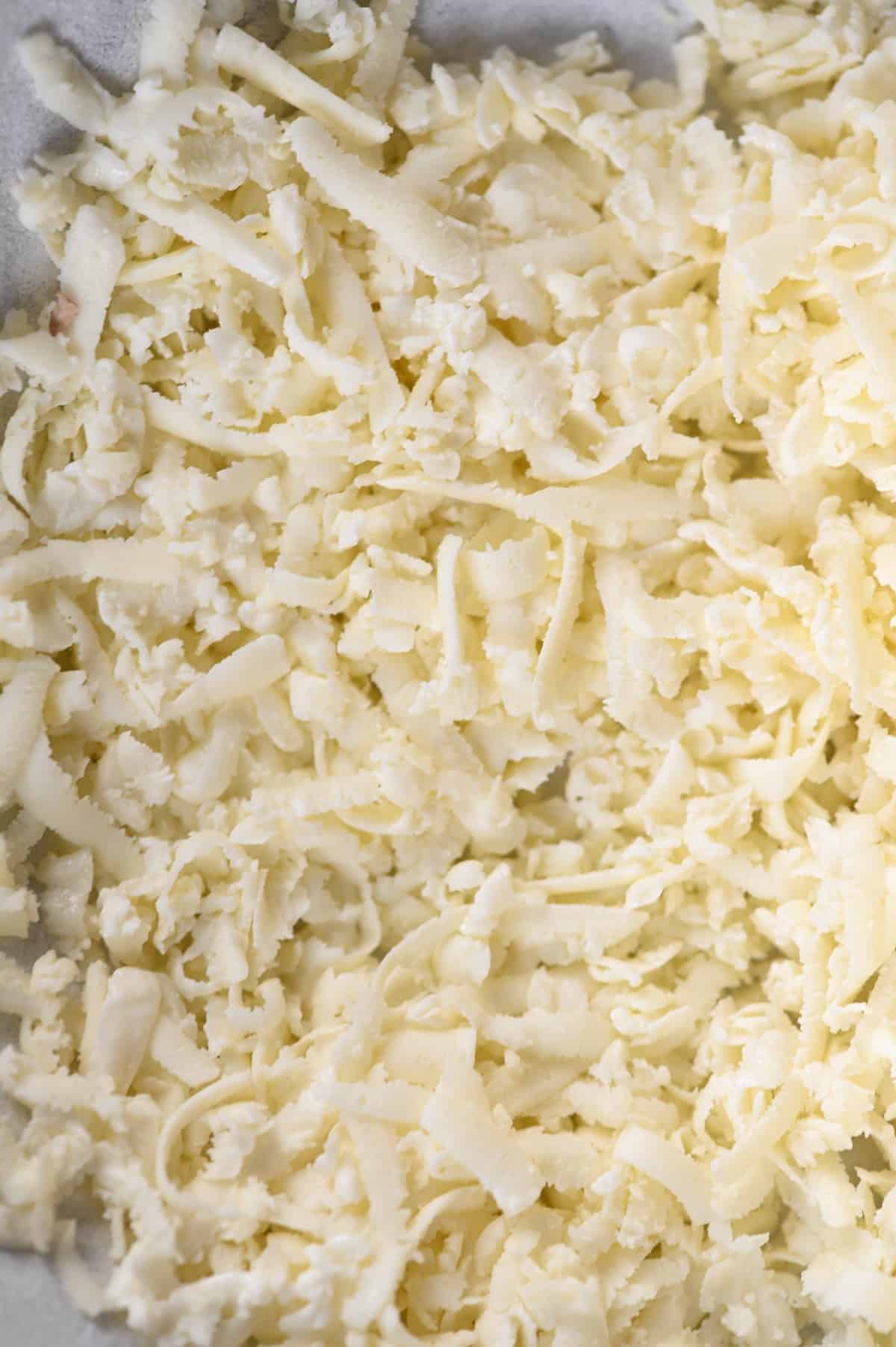
Don't allow a showtime 'bad batch' throw you off though – in fact, even 'failed batches' are salvageable and able to be used for other purposes (refer to the recipe notes).
The Ingredients
Fresh Milk (Cow or goat): I prefer fresh, whole raw milk for the accented best results. Even so, you can also use skimmed milk (ii%, etc.) – though it won't taste as creamy or rich, and even pasteurized milk. Avoid homogenized or ultra-pasteurized milk as they won't work.
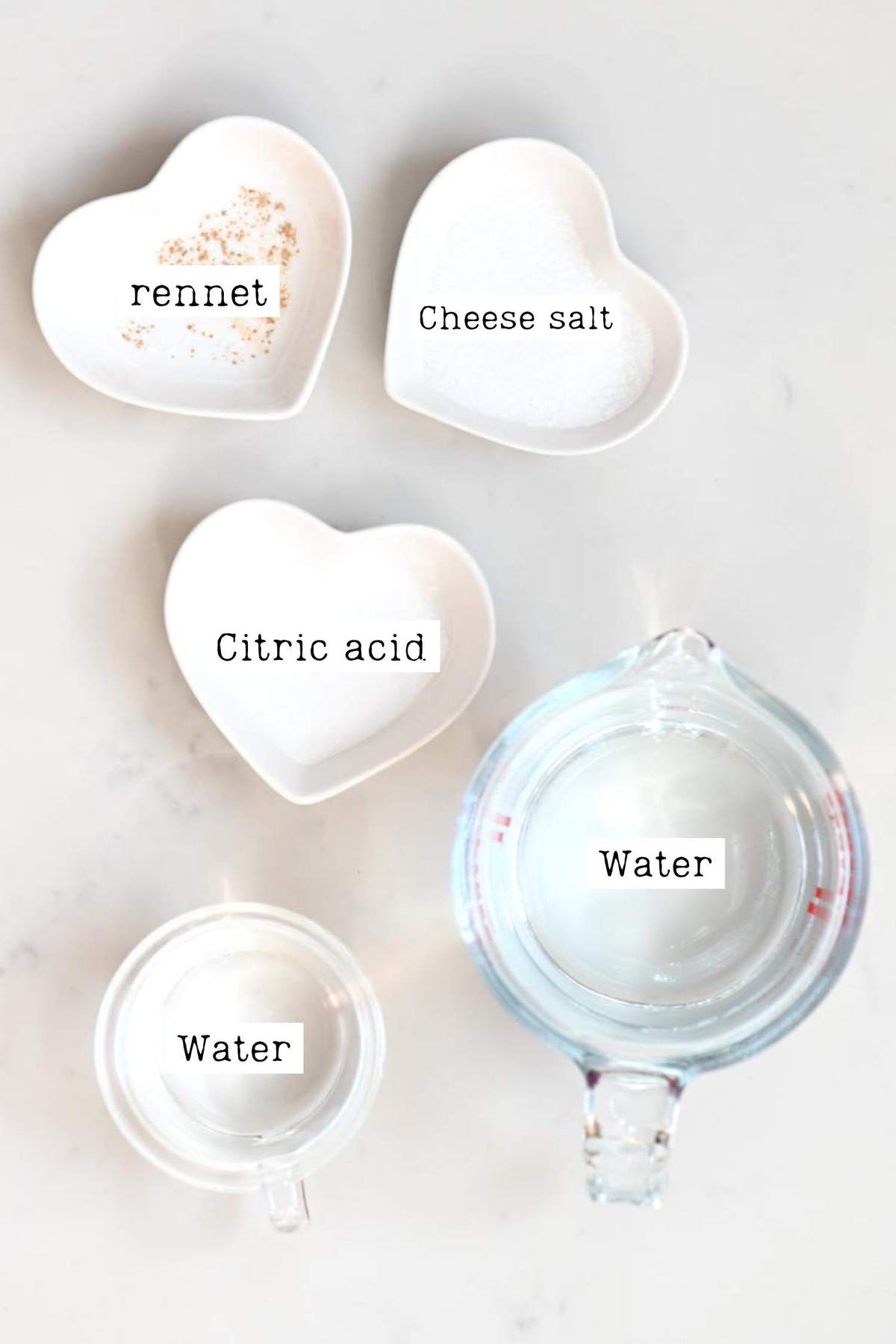
Rennet: You can use rennet tablets or liquid rennet (which allows you to skip a stride). For a vegetarian version, y'all can use vegetable rennet.
Citric Acrid: What I'll exist using as my curdling agent. I've experimented with other options but have yielded the best, most consequent results with citric acid. This is crucial as also little acidity volition affect its ability to stretch and too much will lead to a grainy, lumpy mass.
Cheese Table salt (aka Kosher Salt/ non-iodized common salt): The lack of iodine means that information technology won't inhibit the needed cultures/bacteria within the cheese.
Water: Used to help dissolve the rennet and the citric acid.
The Tools Needed
While there are some general items you'll need, such every bit bowls, spoons, and a large pot, there are a few more 'specialized' items you'll demand for this DIY including:
A digital thermometer (i.e., an instant-read thermometer) – You may non need this once you've had years of cheesemaking experience. Nonetheless, for beginners, this tool is relatively inexpensive and makes a massive difference in achieving correct results.
Condom Gloves – For the stretching steps, equally the cheese volition be HOT. Make certain to employ ones that you don't use for cleaning.
A Large Colander – for draining the cheese curds.
Cheesecloth – This isn't 100% necessary, but lining your colander with cheesecloth makes for a FAR easies cleanup and is something I never skip.
The Step By Step Instructions
There are substantially three chief 'stages' to making homemade mozzarella; offset, is heating and acidifying the milk, second is curdling the milk to class curds, and finally stretching the curds and forming the mozzarella ball.
Hither are the complete steps, though.
First, set up the citric acrid and the rennet mixture.
In a bowl, mix the citric acid and water and stir until dissolved.
Meanwhile, in a separate bowl, mix the rennet and h2o and stir well until dissolved.
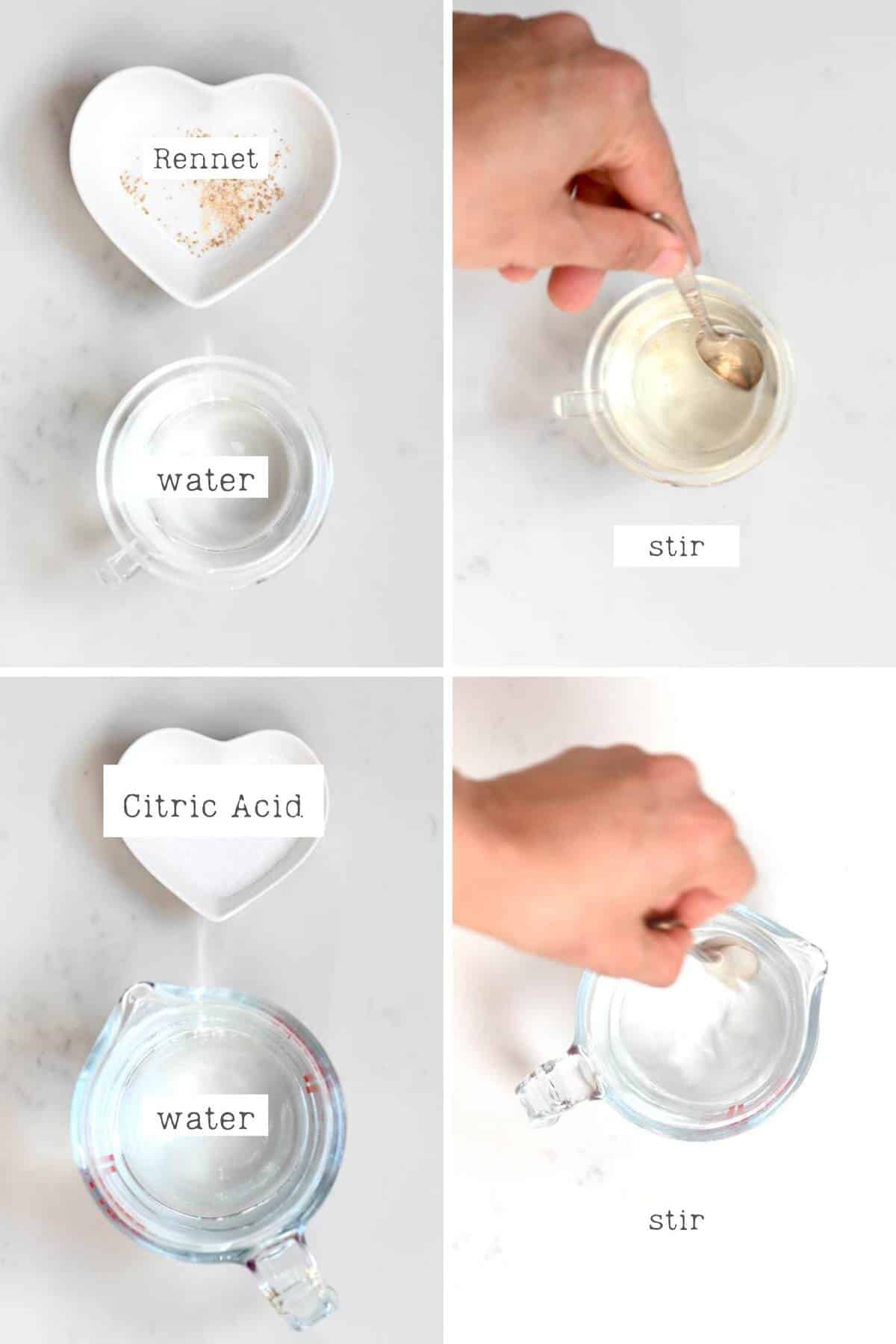
Next, heat the milk
Cascade the milk into a large pot and add the citric acrid mix. Warm the mixture over medium rut and stir slowly but continuously until the milk reaches 32ºC/90ºF. Remove from the oestrus as soon every bit you reach the required temperature.
Ready and Curdle The Milk
Add the rennet mixture to the warm milk and stir a few times slowly to mix well. Then cover the pot and fix aside for 5 minutes.
Tip: If you can, stir in an up and downwardly motion rather than swirling. The quicker the milk becomes motionless after the rennet is added and mixed in, the better as otherwise, it may non fix correctly if it's nonetheless whirling away. I aim for fifteen seconds max of mixing.
Later on most 5 minutes, the milk should take 'set' and be a consistency similar to a thick yogurt or pudding that you can slice through. If you lot tin cut through information technology nicely in a straight line, y'all can move to the next stride. If not, set bated for another 5 minutes and try again.
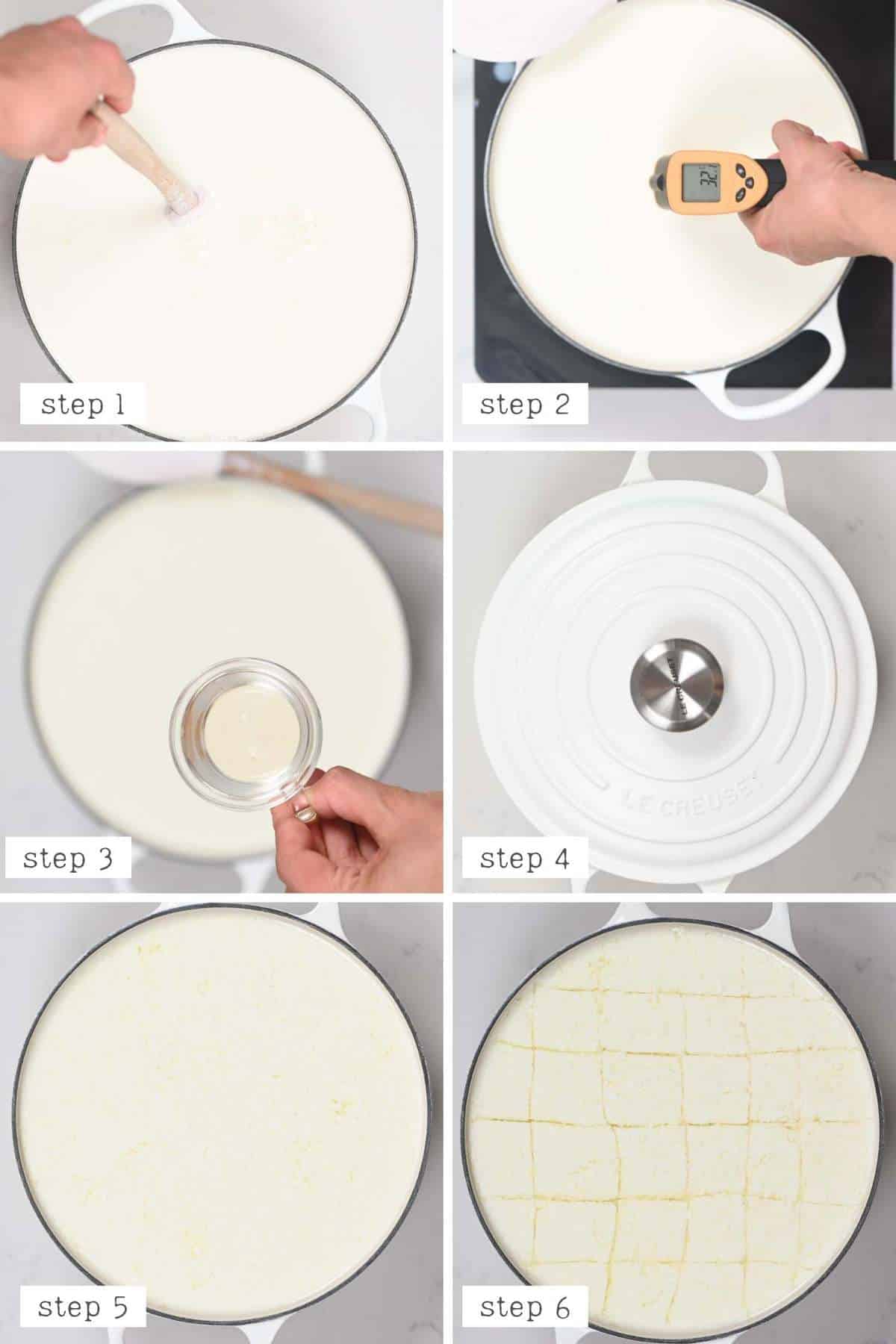
Next, cut the curds into a grid and heat.
It's best to create a grid pattern through the curds, beginning slicing one fashion, then the other. Make sure to cut deep into the cuts, past touching the bottom of the pot.
Then, heat the curds over medium heat and stir very slowly merely continuously. Try not to suspension the curds too much. They simply demand to accomplish 41ºC/106ºF, so they volition warm upwardly quite rapidly (this heating will assist the curds to toughen slightly).
Remove the pot from the heat as soon as the required temperature is reached. Keep to stir, slowly, for another five minutes. During this time, the curds will begin to separate from the whey.
Next, Drain the curds.
Scoop the cheese curds from the pot with a slotted spoon into a big colander lined with cheesecloth/muslin or a nut milk bag and allow the curds to bleed into a bowl (as this whey can be used) for around 5 minutes.
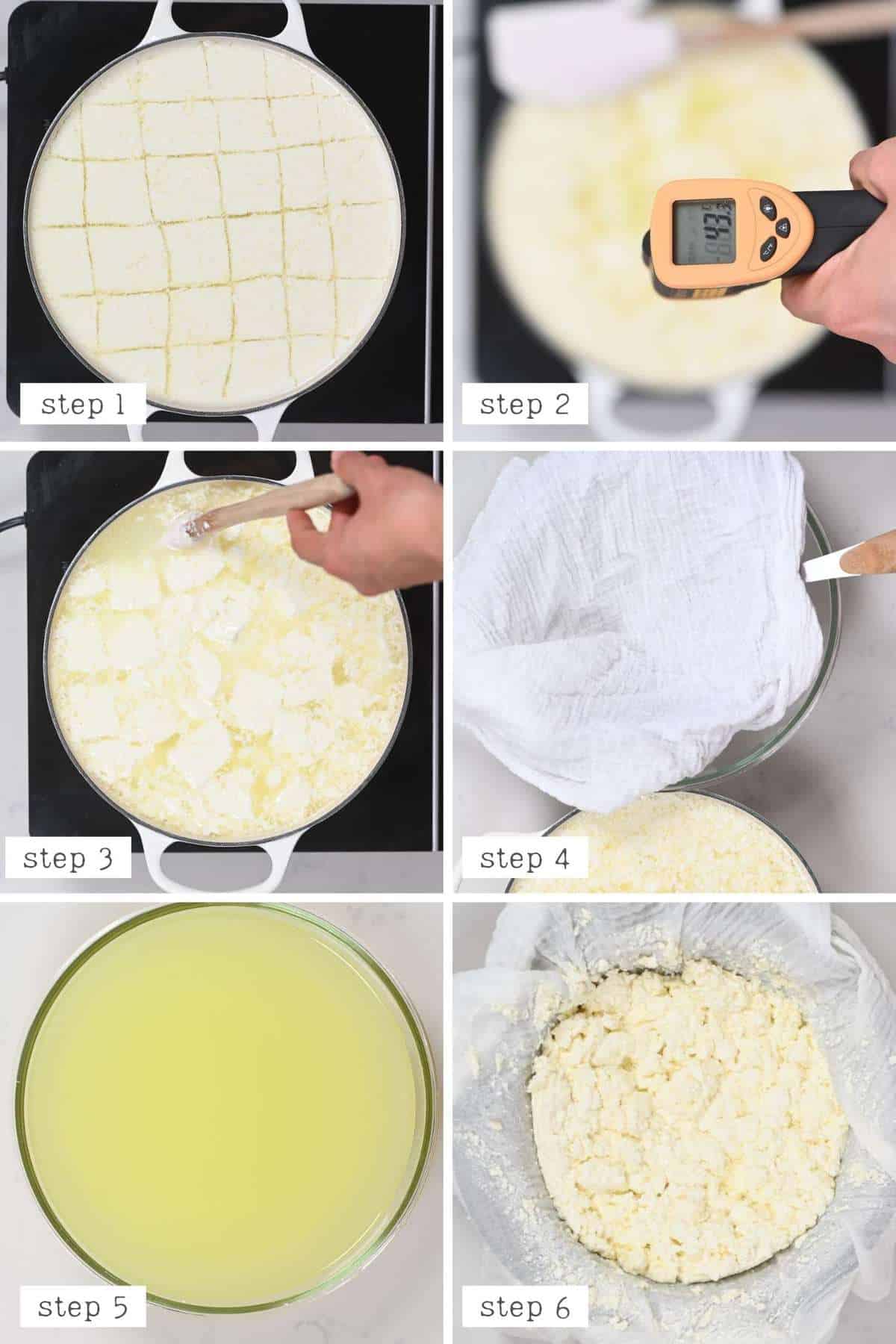
You can either set the whey aside now or use around half of information technology for the next step.
Stretch and shape the mozzarella
Fill up a large basin with hot h2o or rut up the whey liquid (until near 76ºC/170ºF) and place the curds within. Information technology may be easier to divide the curds in half and exercise this in two goes.
Note* Using whey instead of h2o and add a little actress flavour to the cheese.
Keep the curds in the hot liquid for a few minutes. This is when the mozzarella is taking shape – the curds should become stretchy, a bit smooshy, and look a little like melted cheese.
Note* You can also use a thermometer to check when the curds are set to stretch. Yous're looking for an internal temperature of 135F in the cheese.
Finally, remove from the hot whey/ water, add some common salt and so stretch and fold the curds onto themselves (using gloves), similar how you would with taffy. Echo until they become shiny and firm (usually simply a few folds will do like betwixt three-7- don't overwork it). And then ringlet into balls and chop-chop absurd them. (Meet in the video how I did information technology.)
If it'south hard to shape into a ball or comes autonomously while stretching, identify back in the hot liquid and allow to heat up a piddling more to shape into the final, smooth ball.
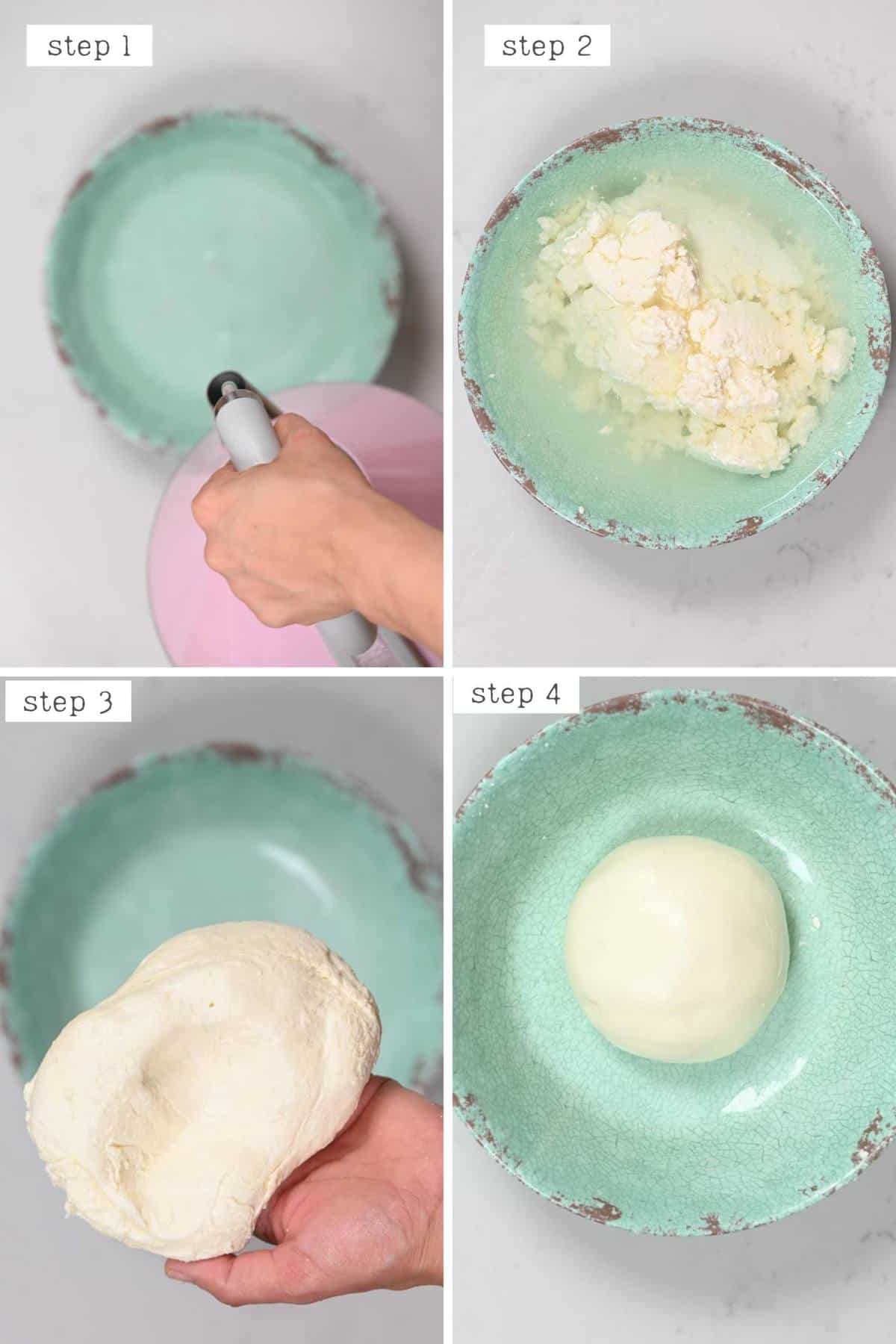
You can also make small mozzarella assurance (Bocconcini).
To do a final 'prepare' of your cheese, you can, optionally, place the homemade mozzarella ball into ice water for a few minutes or in room temperature whey for 10-xv minutes (once again, whey will provide meliorate flavor). And then, information technology'due south set to utilise.
How To Store:
Serve the fresh mozzarella immediately or store it in the refrigerator in the whey or a slated alkali for up to a week.
You can also freeze the mozzarella for up to six months.
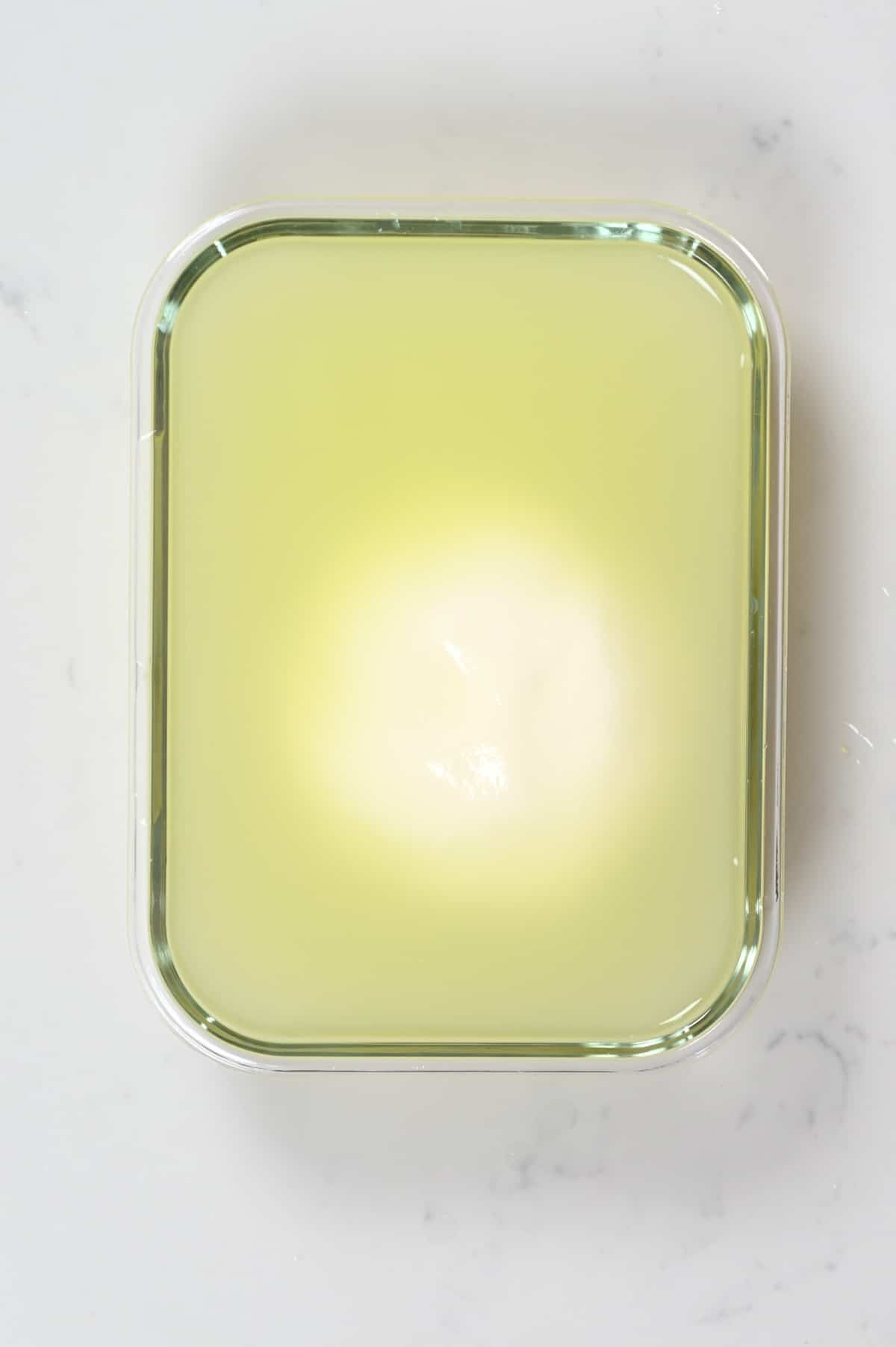
You can also easily grate the mozzarella to top your dishes.
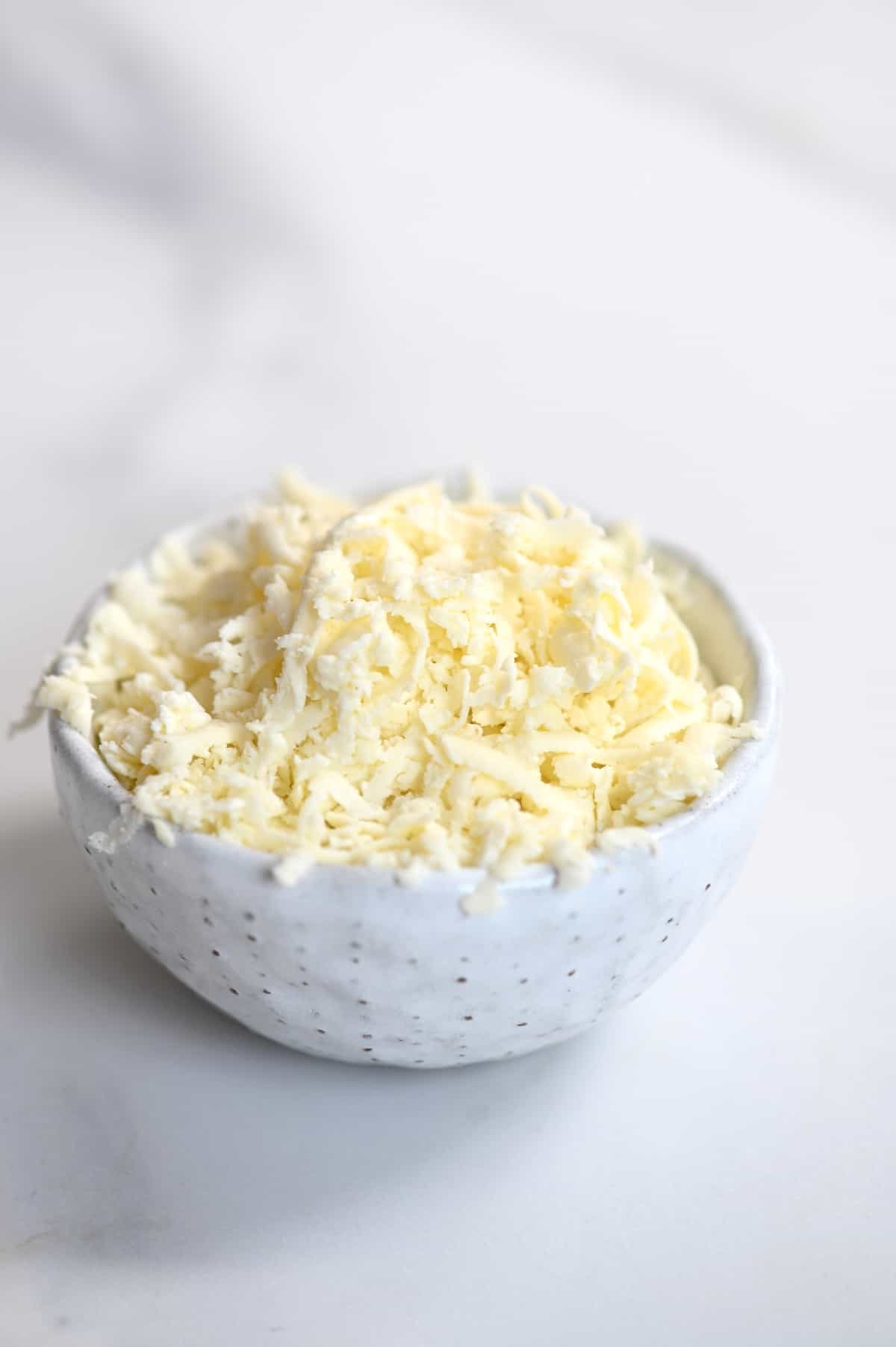
Recipe Notes and FAQs
- If you use goats milk instead of cows, then be even slower and gentler when stirring the milk so every bit not to disturb the curds too much.
- If your cheese is tough or crumbly, so this is likely down to using too much acidity or heating it incorrectly. However, information technology can also happen if the curds are broken up as well much past crude mixing. Effort to reduce the amount of citric acrid in the next batch.
- If the cheese is rubbery, then it's probable that you overworked it during the stretching phase.
- For a softer mozzarella, cease the curds from becoming as firm and work the cheese fifty-fifty less when stretching (literally just a couple of stretches).
- Yous could add some dried herbs to the cheese, if wanted, during the final shaping stage.
- TOP TIP: A 'failed' batch definitely doesn't necessarily mean waste. Fifty-fifty if the cheese is crumbly and won't stretch, this tin be used within pasta dishes, into cooked dishes, etc.
Related Dairy DIYs
- How to Brand Goat Cheese
- Super Easy Bootleg Cream Cheese
- Homemade Ricotta Cheese
- DIY How To Make Paneer At Home
- How To Make Butter (ONE ingredient)
- DIY: Homemade Herb Butter (Chemical compound butter)
Dairy-Free DIYs
- Simple Homemade Vegan Cashew Cheese
- Unproblematic Smoky Vegan Cheddar Cheese
- Easy Stretchy Vegan Mozzarella Cheese
- Simple Herby Vegan Feta Cheese
- How To Make Buttermilk Substitute
If you try this homemade mozzarella cheese recipe, and then let me know your thoughts and any questions in the comments. Also, feel free to tag me in your recreations @AlphaFoodie.
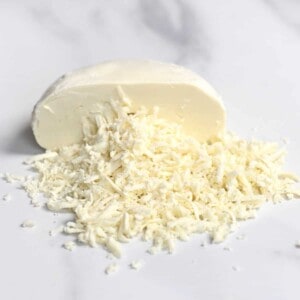
- 1 gallon fresh milk I adopt fresh, whole raw milk for the accented best results. All the same, yous tin can also apply skimmed milk (2% etc) or pasteurized milk. Avert homogenized or ultra-pasteurized milk though!
- 1.5 teaspoon citric acrid
- ane cup water to dissolve the citric acid
- 0.01 ounce rennet liquid or tablet – you can use vegetable rennet for a vegetarian version
- iv tablespoon water to deliquesce the rennet
- Cheese table salt aka kosher salt/non-iodied common salt.
Stage 1 – Prepare the milk
-
In a basin, mix the citric acid and water and stir until dissolved.
-
Meanwhile, in aseparate bowl, mix the rennet and water and stir well until dissolved.
-
Pour the milk into a large pot and add the citric acrid mix. Warm the mixture over medium heat and stir slowly simply constantly until the milk reaches 32ºC/90ºF. Remove from the rut as soon equally you achieve the required temperature.
-
Add together the rennet mixture to the warm milk and stir a few times slowly to mix well. So cover the pot and set aside for five minutes.*
-
After about five minutes, the milk should have 'prepare' and be a consistency like to a thick yogurt or pudding that yous can slice through. If you lot can cut through it nicely in a direct line, you tin motion to the next step. If not, gear up aside for another 5 minutes and effort again.
Stage 2 – Gear up the curds
-
To cut the curds, It's best to create a filigree blueprint through the curds, first slicing ane way, then the other. Make sure to cut deep into the cuts, by touching the bottom of the pot.
-
And then, heat the curds over medium heat and stir very slowly only constantly. Effort not to break the curds too much. They only need to accomplish 41ºC/106ºF and then they volition warm up quite quickly (this heating will help the curds to toughen slightly).
Remove the pot from the estrus as soon as the required temperature is reached. Go on to stir, slowly, for another v minutes. During this time, the curds will brainstorm to separate from the whey.
-
Scoop the cheese curds from the pot with a slotted spoon, into a large colander lined with cheesecloth/muslin or a nut milk purse and permit the curds to bleed into a bowl (equally this whey can be used) for around 5 minutes.
-
You can either set the whey bated now or employ effectually half of information technology for the next stride.
Phase 3 – Shaping the mozzarella
-
Make full up a large basin with hot water or heat upward the whey liquid** (until nigh 76ºC/170ºF) and place the curds inside. Information technology may be easier to divide the curds in half and practise this in two go's.
Keep the curds in the hot liquid for a few minutes. This is when the mozzarella is taking shape – the curds should become stretchy, a bit smooshy, and look a footling like melted cheese***.
-
Finally, remove from the hot whey/ h2o, add some table salt and so stretch and fold the curds onto themselves (using gloves), like how you would with taffy.
Repeat until they become shiny and firm (usually simply a few folds will practise similar between iii-7- don't overwork it). Then gyre into balls and quickly cool them. (See in the video).
If information technology's hard to shape into a ball or comes apart while stretching, place back in the hot liquid and allow to heat up a little more to shape into the final, smooth ball. You lot tin also brand small mozzarella assurance (Bocconcini).
How To Store
-
Serve the fresh mozzarella immediately or shop in the fridge in the whey or a slated brine for upwards to a week.
You tin also freeze the mozzarella for up to six months.
* Tip: If you lot can, stir in an up and downward motion rather than swirling. The quicker the milk becomes motionless after the rennet is added and mixed in, the amend as otherwise, it may not set correctly if it'south nevertheless whirling away. I aim for 15 seconds maximum of mixing.
** Using whey instead of water and add a little extra flavor to the cheese.
*** You tin too use a thermometer to check when the curds are set up to stretch. You lot're looking for an internal temperature of 135F in the cheese.
- If yous use goats milk instead of cows then be even slower and gentler when stirring the milk, and so as non to disturb the curds too much.
- If your cheese is tough or crumbly then this is likely down to using as well much acidity or heating it incorrectly. Nevertheless, it can too happen if the curds are broken upward too much by rough mixing. Try to reduce the corporeality of citric acid in the adjacent batch.
- If the cheese is rubbery then it's likely that y'all overworked it during the stretching phase.
- For a softer mozzarella, stop the curds from becoming as firm and work the cheese even less when stretching (literally but a couple of stretches).
- You could add some dried herbs to the cheese, if wanted, during the final shaping stage.
- TOP TIP: A 'failed' batch definitely doesn't necessarily mean waste. Even if the cheese is crumbly and won't stretch, this tin be used within pasta dishes, into cooked dishes, etc.
Serving: i Slice | Calories: 78 kcal | Carbohydrates: six m | Poly peptide: 4 g | Fatty: 4 grand | Saturated Fatty: 2 g | Cholesterol: 13 mg | Sodium: 55 mg | Potassium: 167 mg | Saccharide: half dozen 1000 | Vitamin A: 204 IU | Calcium: 143 mg | Iron: 1 mg
Source: https://www.alphafoodie.com/how-to-make-mozzarella-cheese/

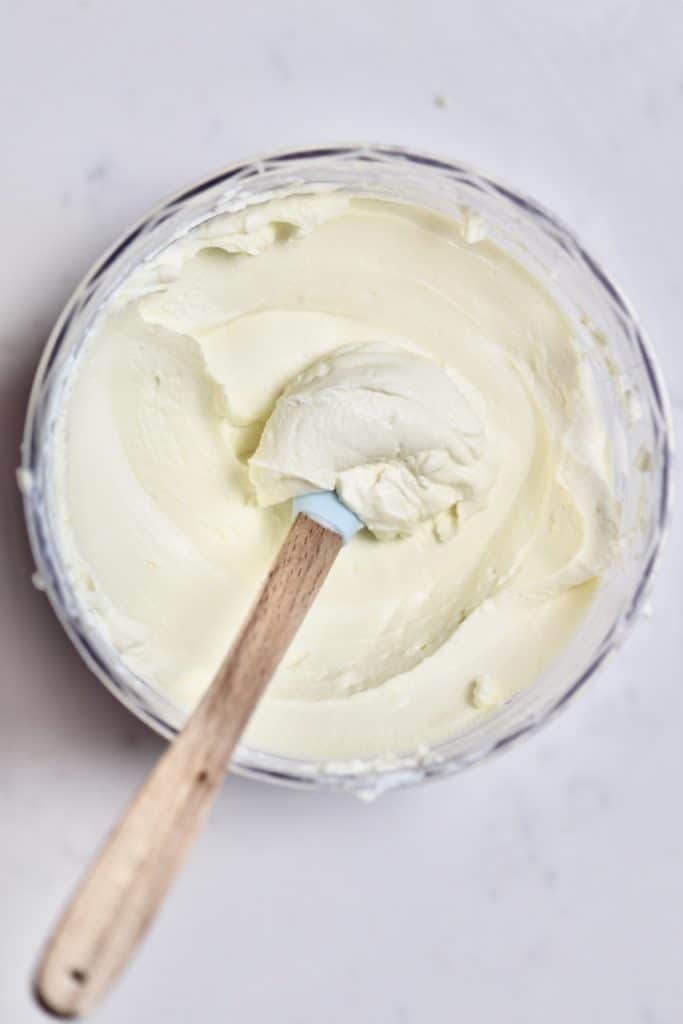
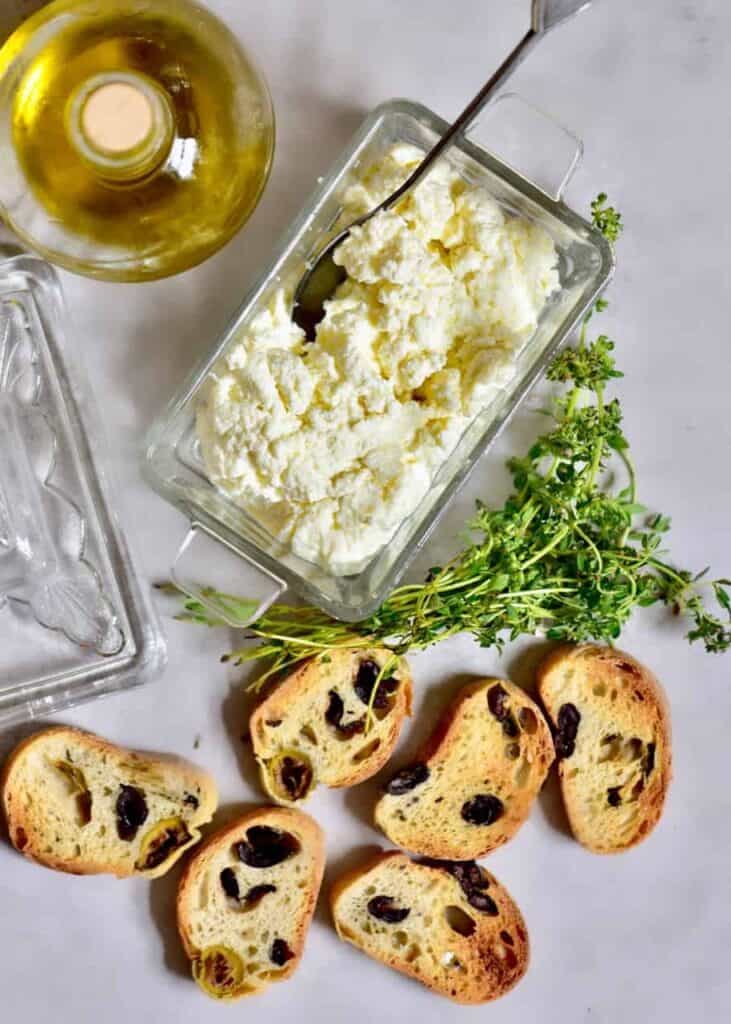
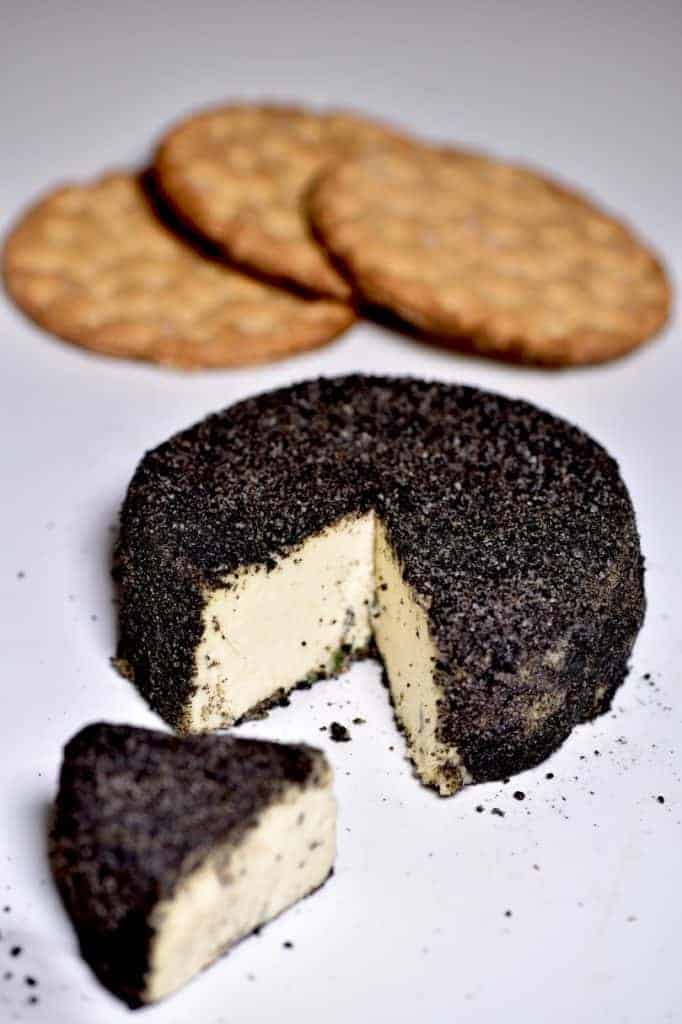

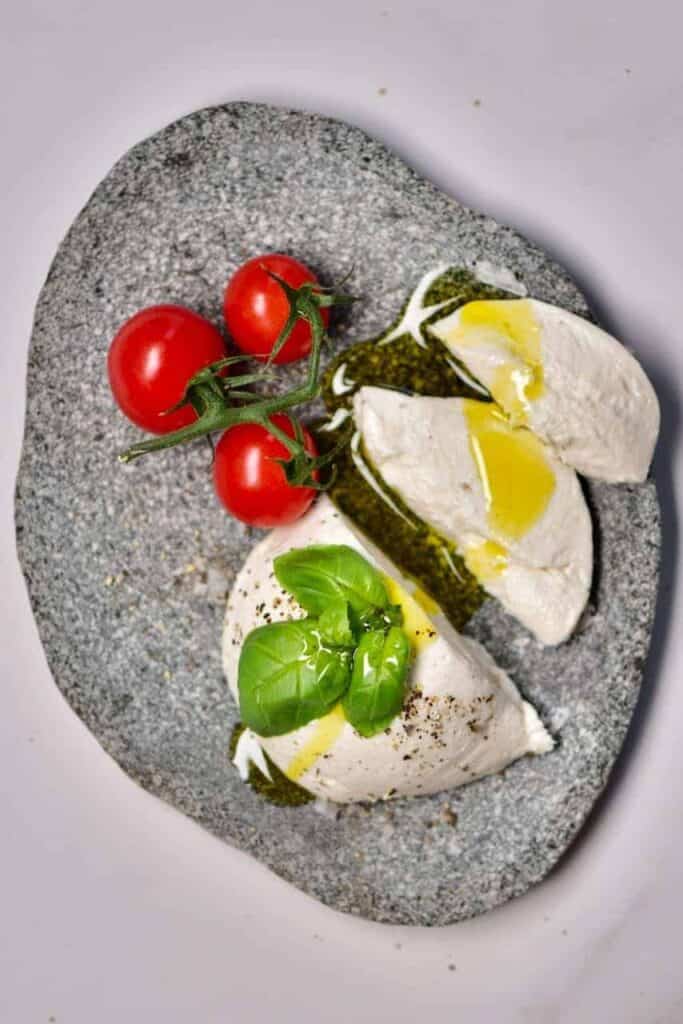
0 Response to "How to Make Mozzerella Soft Again"
Post a Comment